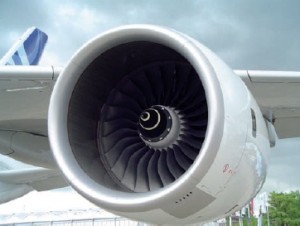Use of Nickel alloys in aircraft components
The knowledge and understanding of uses, strengths and other properties of structural metals is significant to suitably build and retain and equipment, particularly airframes. In aircraft maintenance and repair, in fact a nominal deviation from design specification or substitution of inferior materials, result into loss of lives and equipment.
The choice of an ideal material for a particular job demands knowledge with the common physical characteristics of different metals.
Characteristics of metals
Major concern in aircraft maintenance is general characteristics of metals and alloys like hardness, malleability, ductility, hardness, conductivity contraction and expansion. These terms are stated to maintain a basis for further discussion of structural metals.
Hardness
Hardness describes the ability of a material to prevent abrasion, cutting action or permanent distortion. Hardness is increased by cold processing the metal and in case of steel and specific aluminium alloys by heat processing. The structural components are usually developed from metals in their soft state and are then heat processed to harden them so that the finished shape will be retained.
Strength
An essential characteristic of a material is strength. It describes the ability of a material to prevent deformation. Strength describes the ability of a material to prevent stress without cracking. The load type of stress on the material influences the strength it attains.
Density
In aircraft maintenance, density is an essential factor while selecting a material for use in design as a part to maintain the weight adequately and balance of aircraft.
Other essential characteristics are ductility, malleability, elasticity, toughness, brittleness, fusibility, conductivity and thermal expansion.
Various Super Metals and alloys are needed for aircraft repair. It depends on the need in context to strength, weight, durability and resistance to damage of the particular structure or components. Moreover the specific shape or form of the material has a major role.
Uses of metals and alloys
Different nickel steels are developed by adding nickel into the carbon steels. Nickel improves hardness, tensile strength and elastic limit of steel for use in the aircraft parts for example bolts, terminals, clevises and pins.
Chromium steel has good hardness, strength and corrosion resistant characteristics as well as is specifically fit for heat processed forgings that need higher hardness and strength as compare to plain carbon steels. It is used in balls and rollers of bearings.
Stainless steels or Cr-Ni alloys are the excellent corrosion resistant materials. Their corrosion resistance is described through their surface condition and chemistry, temperature and concentration of the corrosive material. The corrosion resistant alloy Inconel 718 is widely used in manufacturing aircrafts.
The stainless steels can be rolled, drawn, bent or developed to various shapes. They are used for various parts of an aircraft such as their applications include development of exhaust, stacks and diverse structural and machined components, springs, castings and control cables.
Molybdenum is added in nominal concentration to chromium to develop Cr-Mo steel that widely resist wear and tear of the aircraft component. They are particularly fit for welding and are used in welded structural components as well as assemblies.


